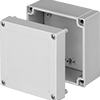Filter by
Capacity
Length
Seal Material
Maximum Temperature
Clarity
Mouth OD
Mouth ID
Bottom Inside Length
DFARS Specialty Metals
Export Control Classification Number (ECCN)
Depth
Bottle Material
Containers, Storage, and Furniture
Fluid Handling
Material Handling
Electrical
Measuring and Inspecting
Power Transmission
Facility and Grounds Maintenance




















































